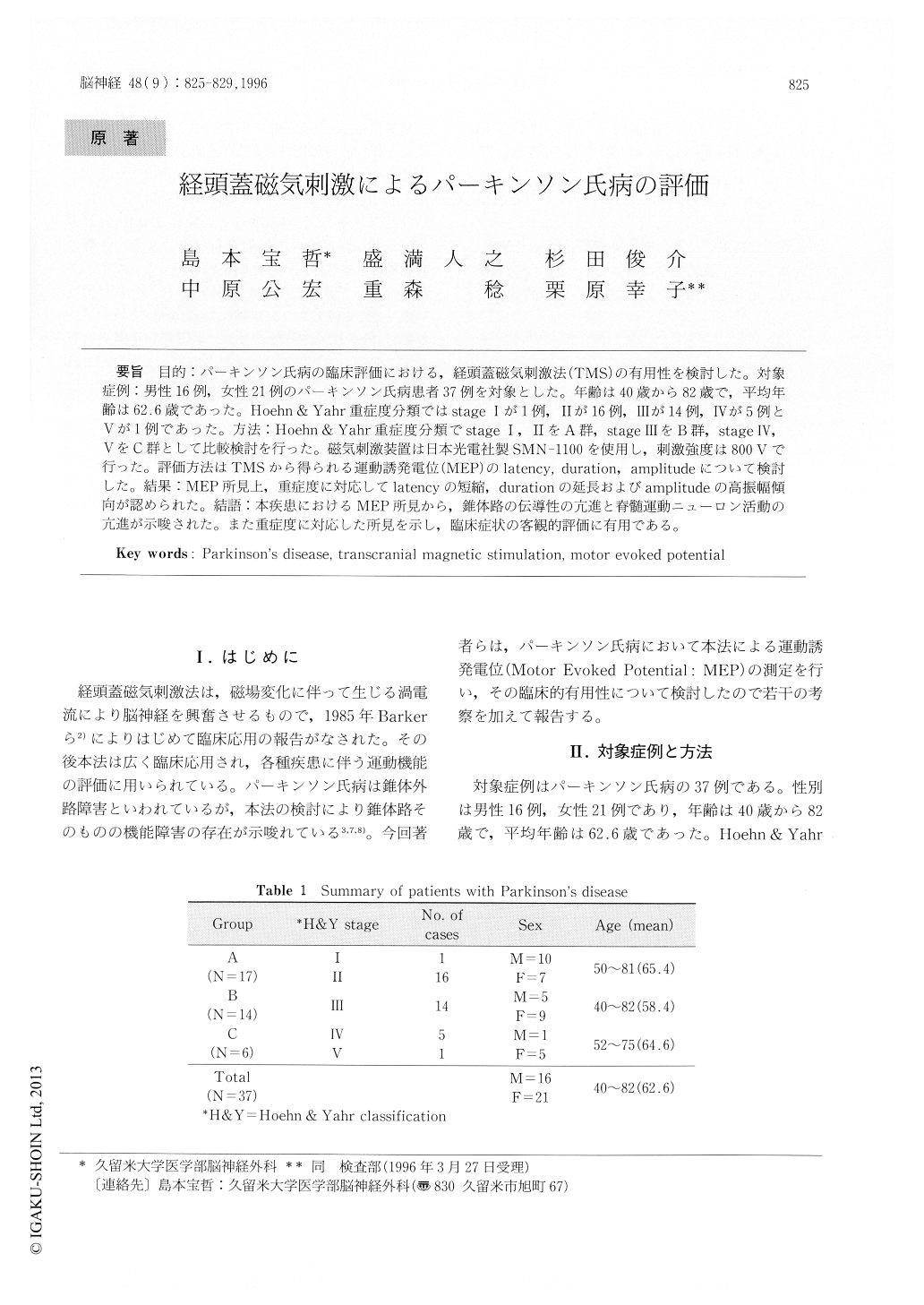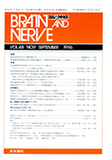Japanese
English
- 有料閲覧
- Abstract 文献概要
- 1ページ目 Look Inside
目的:パーキンソン氏病の臨床評価における,経頭蓋磁気刺激法(TMS)の有用性を検討した。対象症例:男性16例,女性21例のパーキンソン氏病患者37例を対象とした。年齢は40歳から82歳で,平均年齢は62.6歳であった。Hoehn & Yahr重症度分類ではstage Iが1例,IIが16例,IIIが14例,IVが5例とVが1例であった。方法:Hoehn & Yahr重症度分類でstage I, IIをA群,stage IIIをB群,stage IV,VをC群として比較検討を行った。磁気刺激装置は日本光電社製SMN−1100を使用し,刺激強度は800Vで行った。評価方法はTMSから得られる運動誘発電位(MEP)のlatency, duration, amplitudeについて検討した。結果:MEP所見上,重症度に対応してlatencyの短縮,durationの延長およびamplitudeの高振幅傾向が認められた。結語:本疾患におけるMEP所見から,錐体路の伝導性の亢進と脊髄運動ニューロン活動の亢進が示唆された。また重症度に対応した所見を示し,臨床症状の客観的評価に有用である。
We studied motor evoked potential (MEP) elicited by transcranial magnetic stimulation (TMS) in 37 patients with Parkinson's disease (PD). TMS was used at high energy capacity (800 Volts) in all patients and normal subjects under resting position. MEPs were recorded from the abductor pollicis brevis and the abductor hallucis. Magnetic stimulator equipped with an 8-shaped coil and a flat type coil was used for TMS. The data were statistically evaluated using a paired Student t test. The latency of MEPs were slightly shorter in PD patients than that in normal subjects. There were significant differences between HV.

Copyright © 1996, Igaku-Shoin Ltd. All rights reserved.


